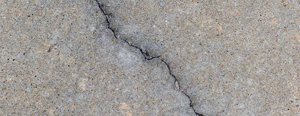Category
- Concrete Best Practices
The water content of concrete is one of the most important but sometimes overlooked features of a concrete mix design. Water is needed to react with cement so the concrete can harden and gain strength, however only a portion of the water is needed for these reactions.
The remainder of the water (about half) provides the slump, flow and overall “workability” so the concrete can be mixed and placed. After the concrete hardens, the “excess” water slowly evaporates. As the concrete dries out and loses water, it shrinks in a process known as “drying shrinkage.” This shrinkage is one of the main factors that can cause concrete to crack.

Relationship between total water content and drying shrinkage.
Drying shrinkage increases with increasing water contents.
(source: www.cement.org)
Using less water for a given amount of cement produces concrete that is stronger and less permeable. Many concrete mixes are designed around a particular water-cement ratio (w/c). A well-proportioned concrete mix might have a w/c ratio of 0.40 (i.e. the weight of water used is half the weight of cement). You might assume that if the water-cement ratio is low, then the total amount of water must also be low. However, this is not always true. Even if the water-cement ratio is low, the total amount of water in the concrete can still be high.
For example, consider a cubic meter of concrete with 400 kg of cement and a w/c of 0.40, for a total water content of 160 kg. Now compare this to a second mix with 300 kg of cement and the same water-cement ratio. For the second mix, the total water content will be only 120 kg. The difference in water content between these two mixes (40 kg) is significant. For the second mix, you could actually add a fair amount of water (and increase the water-cement ratio) and still have less total water than the first mix. Having a higher water-cement ratio does not necessarily mean there is more water in the concrete. Keep in mind that the second mix is lower in cement content and therefore has less strength. Low strength is another factor that contributes to cracking.
This is important because the amount that concrete shrinks is directly related to the total amount of water in the mix. More water means more shrinkage, which leads to more cracking. If you want your concrete to be watertight, you will want to use a mix design that keeps the total water content as low as possible.





